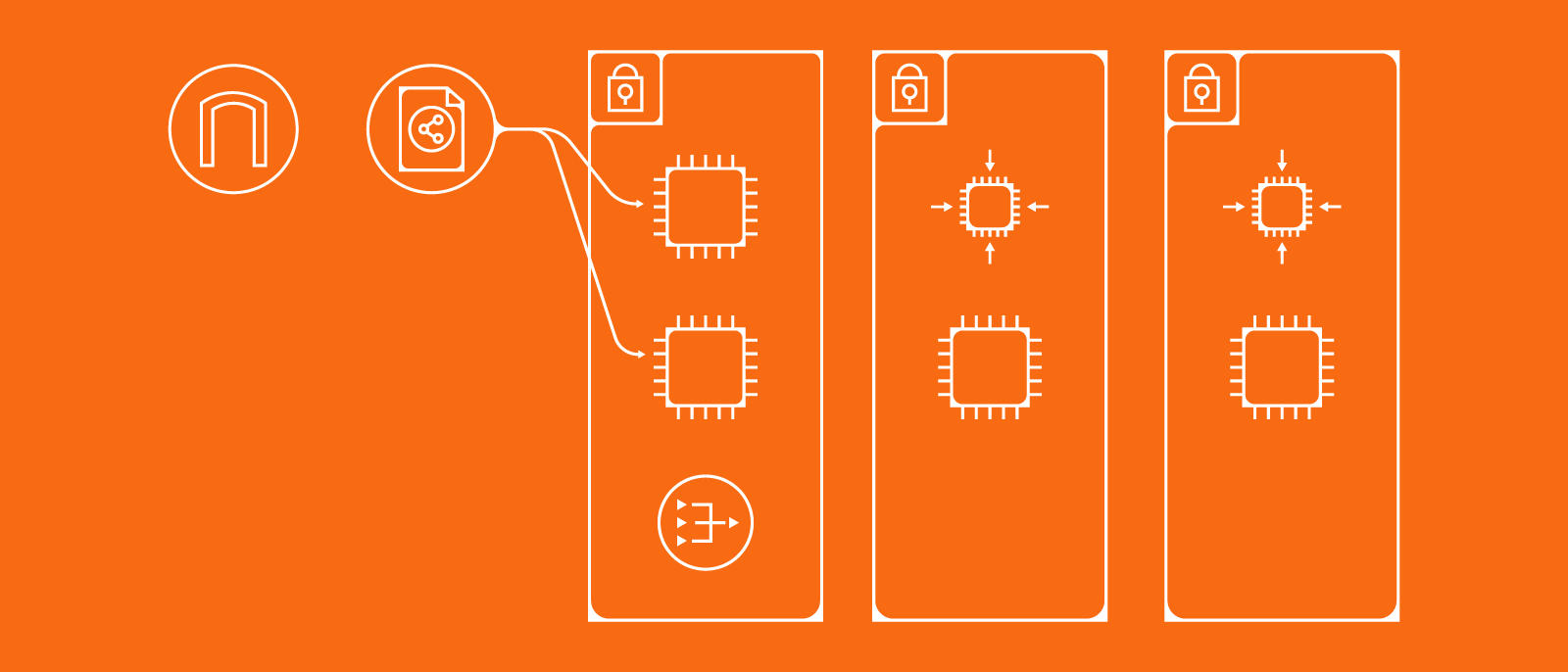
Benefits and best practices for AWS Well-Architected Framework
Lucid Content
Reading time: about 6 min
Topics:
The AWS Well-Architected Framework is a tool designed to help you to consistently build a secure, high-performance, reliable, and efficient cloud infrastructure.
After spending a lot of time reviewing thousands of customer cloud architecture plans, the developers at Amazon Web Services (AWS) were able to identify common themes that made these architectures successful. Using what they learned, they developed the AWS Well-Architected Framework.
5 AWS Well-Architected Framework pillars
The AWS Well-Architected Framework is built on five principles, or pillars.
- Operational excellence: Run and monitor systems to deliver business value and continuous process and procedure improvement.
- Security: Protect the confidentiality and integrity of information, systems, and assets.
- Reliability: Emphasize fault-tolerance, the ability to quickly recover from failures to meet demands.
- Performance efficiency: Leverage IT and computing resources efficiently to meet system requirements and select the right resources based on workload requirements.
- Cost optimization: Understand and control how money is spent.
If you do not build your architecture on the five pillar foundation, you risk building a system that fails to meet expectations. These pillars are essential for developing stable systems.
AWS Well-Architected Framework best practices
The AWS Well-Architected Framework includes some best practices for cloud architects to follow to ensure that the cloud system is stable and secure.
Best practices for operational excellence
To begin with, your operations team must understand the needs of your internal and external customers. Once customer needs are understood, the team can develop processes and procedures to build solutions to meet those needs. The processes should also include plans for expansion and quick response to changes to ensure the organization’s desired business outcomes.
Best practices for security
At the core of security is the practice of monitoring who has permission to access certain systems and data. Also, remember that the best security is planned ahead of time. It’s better to plan how security will be implemented before the system is architected because it will be harder to fix or patch breaches after the system is deployed. Included in your security plans should be processes for responding quickly to security incidents and measures to prevent financial loss and to comply with regulations.
Consider the top 4 security challenges with cloud computing so your organization can be prepared and overcome them.
Read nowBest practices for reliability
Your cloud system plans should include processes and mechanisms to handle changes to the system. In addition, your plans should include the ability for the system to be able to detect failures and heal itself.
Since, theoretically, the cloud is limitless, the AWS framework has a lot of reliability built into it. For example, it is the responsibility of AWS to ensure that there is sufficient networking and computing capacity, but cloud engineers can change resource size and allocation on demand.
Best practices for performance efficiency
Use a data-driven approach when planning for performance efficiency. Learn about and understand the services available on AWS to determine which services and options will work best with your architecture workload. This will help you achieve optimal performance.
Once you’ve got your system set up, continuously monitor performance to ensure that the services and options chosen are working well. This monitoring will allow you to take advantage of the continually evolving cloud. In addition, monitoring reveals areas of poor performance so that you can take immediate action to correct those inefficiencies.
The best solution for your cloud system will vary based on the workload. Use multiple solutions to find the best performance for your setup.
Best practices for cost optimization
Part of the architecture plan needs to include processes that balance costs against the objectives you want to achieve. A checks and balances approach allows the organization to be flexible and innovative without spending too much money.
For example, it may be cheaper to buy a smaller, cheaper server to perform a series of processes. However, if it takes five times longer for that server to complete a process than a server that costs twice as much, it would be more cost-effective to pay for the bigger server up front. The more expensive server has the potential to process more work in a day and to give the company a better return on investment.

Don't stress about cloud costs
Find additional ways to save as you reap the benefits of AWS.
Learn moreBenefits of the AWS Well-Architected Framework
Implementing the Well-Architected Framework helps you develop consistent practices for reducing risk and increasing business value. The framework offers many benefits including the following:
Faster build and deployment timeframes
Being consistent with your processes and procedures drives efficiency. A solid, reliable infrastructure allows you to build and deploy apps faster. This ultimately means that you can scale your system with minimal risk. Beyond that, working with a clear well-defined framework improves developer skills and makes them more knowledgeable. The end result? Better customer service.
Cloud-native approaches
“Cloud-native” refers to an approach to developing and running applications that reside in a cloud computing environment. It’s more than taking your existing applications and making them available from a hosted cloud service. It’s about being truly focused on the cloud environment from the beginning.
Cloud systems are able to handle rapid change, are scalable, and are resilient to errors and breakdowns. Applications that are designed from the ground up to reside in a cloud system can be built and deployed faster, can easily be placed in and moved through different environments, and can be scaled up and down easily to meet customer demand.
Fewer risks
Conducting periodic reviews of your Well-Architected Framework helps you to find potential risks and issues before they become a problem. A Well-Architected program lets you assess critical workloads so you can quickly fix problems when they arise.
Consistency
Building a reliable and scalable infrastructure requires your organization to be consistent. When everybody uses the same framework, this gives your company a consistent approach and everybody stays on the same page. The consistency helps as roles within the organization change and new hires come on board. Having all employees on the same page ensures that you will release reliable apps that meet customer needs.
Insight into potential impact
Cloud environments change rapidly. In an agile environment, applications are developed, updated, and deployed rapidly and often. When changes are made, there is always the potential for positive or negative impact on the system. The processes and procedures you employ with the AWS Well-Architected Framework help you to assess and address potential impacts before the changes are made.
Continuous improvement
The AWS Well-Architected Framework gives you a way to measure your systems against best practices. Consistent and frequent reviews help you to identify areas for improvement. Continuous improvement results in better product quality, increased customer satisfaction, and an improved sense of teamwork and product ownership.
Map out your AWS infrastructure with Lucidscale
It’s generally easier for people to understand visuals than it is to expect them to read through tech-heavy documentation and grasp all the concepts. Lucidscale lets you automatically visualize your cloud architecture so you can more easily communicate plans and ideas. Using Lucidscale, you can help everybody understand their roles and areas of responsibility within the cloud. In addition, you are better able to see areas that need improvement and plan for future growth.

Generate diagrams of your AWS architecture, drill down into the data that is important, and optimize your cloud.
Request a demoAbout Lucidchart
Lucidchart, a cloud-based intelligent diagramming application, is a core component of Lucid Software's Visual Collaboration Suite. This intuitive, cloud-based solution empowers teams to collaborate in real-time to build flowcharts, mockups, UML diagrams, customer journey maps, and more. Lucidchart propels teams forward to build the future faster. Lucid is proud to serve top businesses around the world, including customers such as Google, GE, and NBC Universal, and 99% of the Fortune 500. Lucid partners with industry leaders, including Google, Atlassian, and Microsoft. Since its founding, Lucid has received numerous awards for its products, business, and workplace culture. For more information, visit lucidchart.com.
